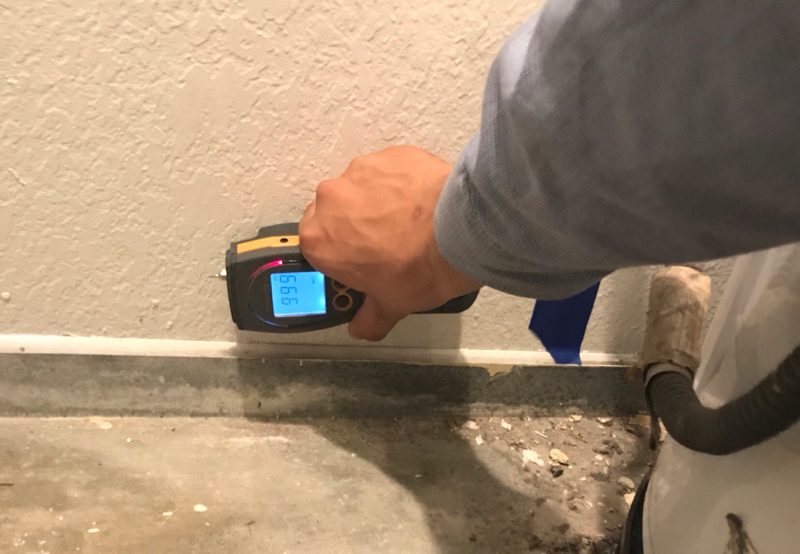
You’ve seen some signs of water damage. But is it from something new that needs immediate attention to prevent further damage? Or is it something old that still needs looking into? Not sure why you haven’t noticed it before? Has it always been there?
Your 5 Best Guides
Water can come from a range of sources. Pipes, drains, a leaky roof, window, or door…. And small leaks can take months to “show through.”
Here are our top 5 guides to deciding if a sign of water damage is from something new or old.
1 The Material Affected
Hard materials such as brick take a long time to show damage. So whether currently damp or not, the problem has probably been around for a while. For other materials, the problem could be old or new. Wood may warp, split, or buckle. You’ll probably notice that immediately for hardwood floors, but it may be a while before you spot problems inside cabinets and in other out-of-the-way places.
2 Dampness
For softer materials such as drywall (also called sheetrock, and also used for ceilings), acoustic tile, and wood damage could be recent or from long ago. Drywall softens with extended exposure, so if it’s still solid the problem is probably very recent, possibly ongoing. If it’s soft and crumbly it’s been wet for a while. Large areas may sag or warp, and a ceiling could even collapse. If an area feels damp the time to act is now.
3 Mold and Odors
Mold indicates ongoing damage to the carpet. But other materials, including wood and drywall, can also harbor mold. Mold typically takes 24 to 48 hours to become noticeable after an area becomes damp. So if you see gray, black, green — or any color — mold the water damage incident most likely began at least 2 days earlier. Mold can occur on just about any building surface, including those hidden inside walls, inside crawl spaces, and so on. So your only clue may be a musty odor. Water damage can also include wood decaying due to bacteria growth. That too has its distinctive odor. Either way, it’s time to go looking for visible signs of water or water damage.
4 Water Stains
You’ve probably seen water stains on the ceiling in old buildings. But they can happen on the walls and ceilings of structures of any age. Their exact appearance is a pretty good indication of when, and how, they happened.
- A single dark area with no surrounding discoloration indicates a single incident, usually recent.
- Lighter yellowish, brownish, white, or chalky stains suggest older leaks.
- Several rings indicate repeated incidents, probably over some time. That’s generally the case for building leaks as rains come and go. But some plumbing problems can be intermittent as well. The number of rings is a good indication of the number of leak/dry-out cycles.
- The size of the affected area suggests the severity of a leak, not necessarily how long it’s been going on.
5 Expert Inspection
Calling in a water damage restoration specialist for an inspection is the best way to know for sure how long ago a leak caused a problem. While there they can track down the exact location of any recent source of water or dampness.
In Summary
Water damage costs American homes and businesses some $2.5 billion every year, each claim averaging nearly $7,000.00. So it doesn’t matter if the damage is old or new — you want the original cause corrected. If the leak is ongoing, immediate action can reduce or even eliminate the cost of water damage restoration and repairs.









